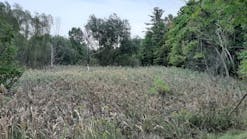Most of us working in this profession—whether we’re running a business that provides erosion and sediment control services, working for an agency that deals with ESC issues, or writing and editing articles about the subject—probably have at least one experience in common: receiving a call (or an e-mail or, in some surprising cases, an elegantly handwritten letter) from someone outside the industry asking for advice about an erosion problem.
It could be the fourth-grade class whose science project has made them aware of the effects of sedimentation on a local creek. Sometimes it’s a small-business owner concerned about the construction site down the block. Or the person who just bought a house next to a stream and has discovered not only that the water is slowly taking his land but also that local ordinances prevent him from doing the first things he thought of to prevent it, such as placing boulders or cement in the channel. Or perhaps someone who’s lived in the same house for years and has noticed one corner of the foundation is slowly subsiding. The questions are usually the same: “Where can I find information?” and, more plaintively, “What should I do now?”
Although it’s difficult to give advice or to recommend a specific course of action if you haven’t seen the construction site or the creek, you’re probably able to point the person toward some resources that might help, even if the situation is outside your particular area of expertise. And just as much as they’re seeking information, people often just want to vent their frustrations on someone who understands their situation.
A case in point: a few days ago I spoke with a man in Massachusetts who lives in a house on the beach. The ocean is getting noticeably closer and has in fact reached the very edge of the neighboring house, whose owner is frantically piling up sandbags. The man who called us had done some research and knew what is and isn’t allowed (virtually all hard structures such as seawalls and riprap are prohibited by local ordinance, for example). He described the area, Nantucket Island, as “essentially a big sandbar,” and he’d recently learned a great deal about the dynamics of shoreline erosion.
He was afraid, too, that he’d witnessed a grim preview of his home’s fate: he told me about an older couple who’d bought a beachfront house nearby with beautiful views, which they planned to fix up for their retirement. They completely renovated it, added a second story, upgraded the plumbing and wiring—and managed to complete the work just before a series of major storms that devoured the land between it and the sea and undermined the structure. They’ll probably be tearing it down, the man noted. “It still has the ‘Andersen’ stickers in the new windows. And the ironic thing is that now there’s once again about 60 feet of beach in front of the house.”
I was able to point him to some sources of information he hadn’t found yet and wished him luck. I didn’t solve his problem – and I’m not sure, given where his house is located, that there is an easy solution – but the conversation was a good reminder. So often we deal with much larger-scale issues, and while people certainly have deep investments—financial and often emotional as well—in commercial developments, tracts of public land, and large stream restoration projects, hearing how one individual is affected by the problem is a sometimes distressing but always useful reminder of who, at the most basic level, all the research and work is finally intended to help.
Janice Kaspersen
Janice Kaspersen is the former editor of Erosion Control and Stormwater magazines.





